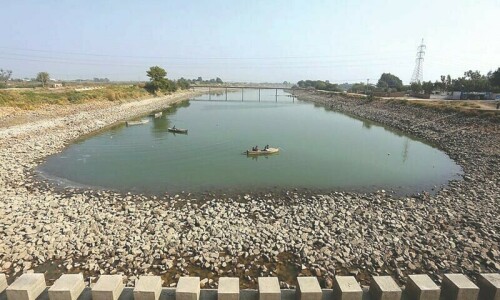Pakistan’s hydrological system is a lifeline for its people, agriculture, and ecosystems. Yet, it is under immense pressure due to climate change, unsustainable practices, and rapid population growth. Glaciers in the northern mountains of Pakistan are melting at an unprecedented rate, feeding the Indus River and its tributaries before the water ultimately flows into the Arabian Sea. This phenomenon has far-reaching implications for the country’s overall water resources, agriculture, and disaster management systems.
The glaciers of the Karakoram, Hindu Kush, and Himalayan ranges are the primary water source for the Indus River, which sustains the livelihoods of millions of Pakistanis. Recent studies indicate that climate change is accelerating glacial melt, resulting in a temporary increase in river flows. While this might seem beneficial, the reality is that this water surplus is not being efficiently captured or utilised, and future water availability is expected to decline as glaciers recede.
The Indus River system, comprising major tributaries like the Jhelum, Chenab, Ravi, Beas, and Sutlej, is governed by the Indus Waters Treaty. This treaty governs water-sharing rules between Pakistan and its neighbour, India. However, internal water distribution across provinces often leads to disputes, particularly when water availability becomes erratic due to climate variability and mismanagement.
Pakistan’s burgeoning population, projected to reach over 300 million by 2050, poses a grave threat to food security and water availability. Agriculture, which consumes over 90 per cent of the country’s water resources, is heavily dependent on predictable water flows from the Indus River. Increasing demand for food production coupled with inefficient irrigation practices exacerbates water scarcity, especially in the tail-end areas of irrigation canals in Sindh and Balochistan.
Challenges of water-related disasters
Floods and droughts present twin challenges for Pakistan’s water security. Flash floods caused by heavy rainfall, glacial lake outbursts, and debris flows contribute to hazardous conditions, particularly along the right and left banks of the Indus River. These floods not only devastate agriculture and infrastructure but also deposit silt, sand, and debris, further complicating drainage systems.
The districts of Thatta, Badin, Mirpurkhas, and the coastal regions of the lower Indus basin are particularly vulnerable to both floods and droughts. During floods, inadequate drainage systems and rising water tables lead to waterlogging and deteriorating water quality. In times of drought, these areas experience severe water scarcity, further aggravating the already dire situation for agriculture and local communities.
Increasing demand for food production coupled with inefficient irrigation practices is exacerbating water scarcity
Urban flooding, particularly in cities like Karachi and Lahore, is another growing concern. Inadequate drainage systems and encroachments exacerbate these events, leading to waterlogging, land degradation, and the deterioration of water quality. Conversely, droughts and prolonged dry spells create severe water shortages, especially in the tail-end regions of Sindh and Balochistan. These areas suffer the most from mismanagement and lack of infrastructure, leaving smallholder farmers particularly vulnerable.
Solutions for a Resilient Future
To mitigate these challenges, Pakistan must adopt a multi-pronged approach that emphasises sustainable water management and disaster resilience. Urban areas require comprehensive drainage planning to prevent flooding. Removing encroachments and restoring natural waterways is critical to managing water flows effectively.
Natural depressions in highland areas, such as the Koh-e-Suleiman Range and the Kirthar National Range, should be rehabilitated and developed into small reservoirs. These reservoirs can capture flash floods and seasonal flows, ensuring that water is available during dry periods.
Furthermore, high-efficiency irrigation systems, such as drip and sprinkler irrigation, should be promoted. Solar-powered pumping systems can help smallholders utilise preserved water effectively, ensuring sustainable agriculture even in mountainous regions.
In essence, a unified approach to water management across provinces is essential to address inequities in water distribution and ensure compliance with national and
international treaties, and policymakers must prioritise climate adaptation strategies, such as afforestation and watershed management, to reduce the impact of glacial melt and extreme weather events. Public awareness campaigns can also encourage water conservation and responsible usage.
Dr Abdul Ghani Soomro is a principal scientist, and Dr Aneela Hameem Memon is an agricultural engineer at the Pakistan Agricultural Research Council
Join DawnMedia’s Breathe Pakistan initiative to combat climate change
Published in Dawn, The Business and Finance Weekly, January 27th, 2025















































